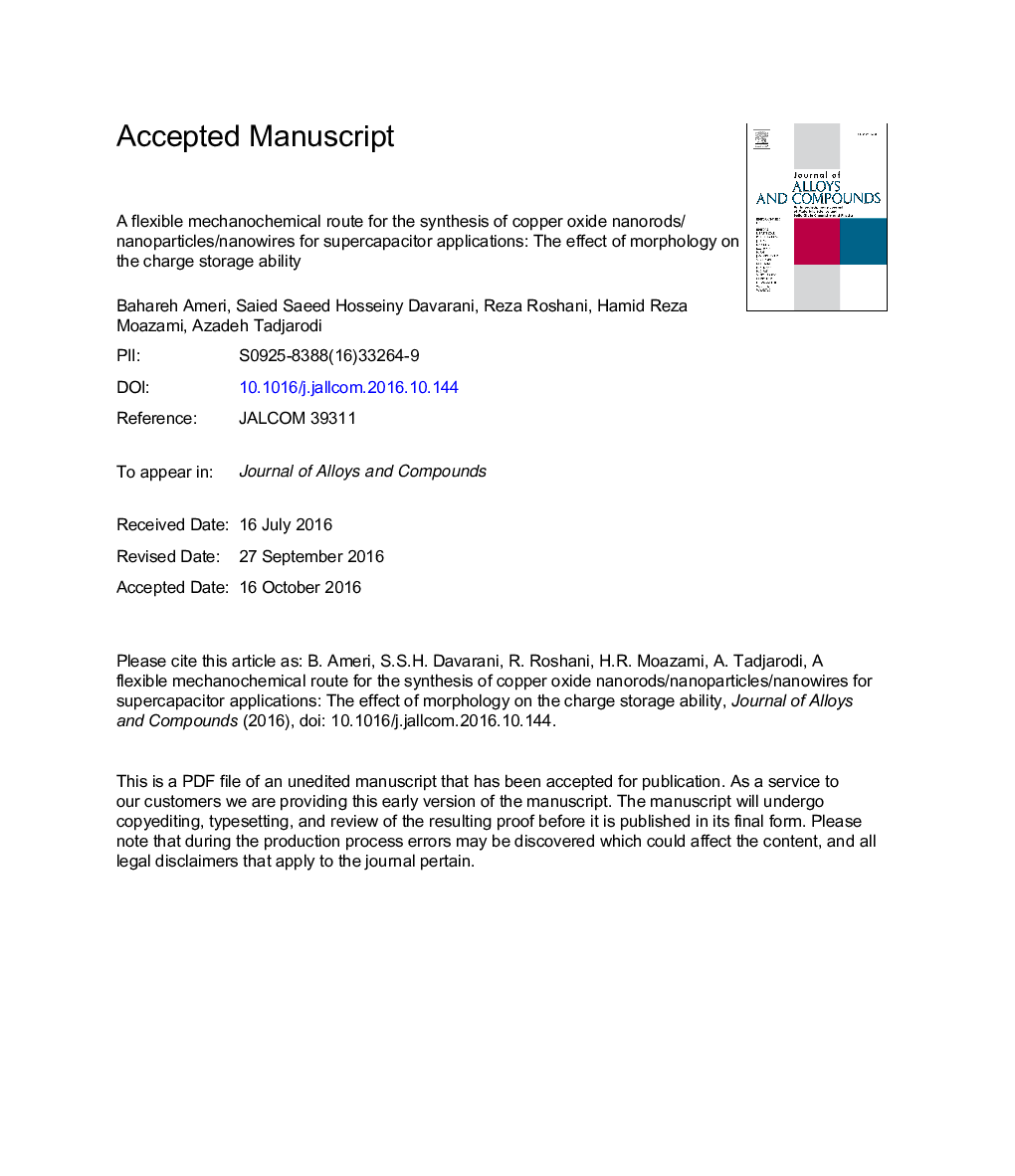| Article ID | Journal | Published Year | Pages | File Type |
|---|---|---|---|---|
| 5461379 | Journal of Alloys and Compounds | 2017 | 36 Pages |
Abstract
A mechanochemical method has been proposed for preparing copper oxide (CuO) nanostructures with different morphologies including nanowires, nanorods and nanoparticles. The various nanostructures of CuO were synthesized by the reaction of copper (II) acetate monohydrate and diammonium oxalate monohydrate with different ratio in solvent free conditions. The obtained nanostructures were characterized by scanning electron microscopy (SEM), transmission electron microscopy (TEM), X-ray powder diffraction (XRD), Fourier transform infrared (FT-IR) and Brunauer-Emmett-Teller (BET) surface area analysis. It has been found that the morphology of the obtained structures can be altered by adjusting the synthesis conditions including the ball milling time and the molar ratio of the starting materials. The charge storage ability, cycle stability and ion transport of the obtained CuO nanostructures were investigated by means of cyclic voltammetry (CV), galvanostatic charge-discharge (GCD) cycling and electrochemical impedance spectroscopy (EIS) in 6.0Â M KOH. It has been shown that the charge storage ability of the product is strongly affected by its morphology whereas the cycle stability is influenced by crystallinity. The highest specific capacitance for CuO was found to be 113.5Â FÂ gâ1 for nanoparticles at scan rate of 1Â mV/s.
Related Topics
Physical Sciences and Engineering
Materials Science
Metals and Alloys
Authors
Bahareh Ameri, Saied Saeed Hosseiny Davarani, Reza Roshani, Hamid Reza Moazami, Azadeh Tadjarodi,
